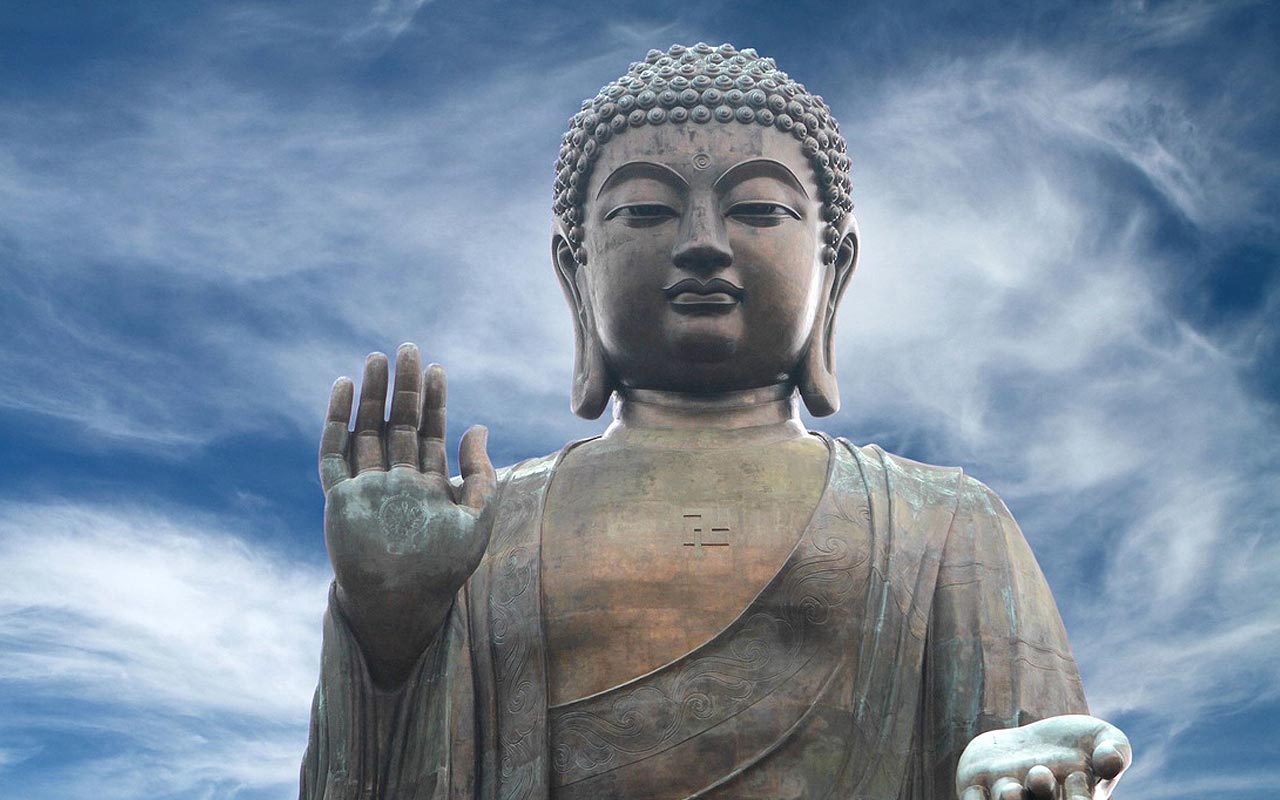What Are the Four Noble Truths of Buddhism?
After Buddha gave up worldly life and sat down for meditation under the Bodhi tree, he attained enlightenment.
He laid down his teachings in easily understandable language for the common man in the form of Four Noble truths.Though Buddhism is now divided into several schools each of which has its own set of beliefs, the essence of Buddhism is summed up in the Four Noble Truths enunciated by the Buddha.
First Noble Truth – To live means to suffer
Until the age of 29, Prince Siddhartha (Buddha’s real name) was confined to the four walls of the palace by his father. When he first stepped out of the palace, he saw four things which left a deep impact in his tender and naïve mind: a new born baby, a crippled old man, a sick man and the corpse of a dead man.
The Prince, who had been brought up in the lap of luxury, oblivious to the suffering in the world outside the palace, was deeply perturbed when he saw death, misery, and suffering with his own eyes.
During his meditation, he realized that ‘life is suffering.’ The reason for this being the fact that human beings are not perfect. Likewise, the world inhabited by them is also ridden with imperfections.
The Buddha realized that during their journey through life, a human being has to endure many sufferings- physical and psychological- in the form of old age, sickness, separation from beloved ones, deprivation, encounters with unpleasant situations and people, lamentation, sorrow and suffering.
All these misfortunes befall human beings because they are subject to desires and cravings. If they are able to get what they aspire for, they derive pleasure or satisfaction. But this joy or pleasure is also short lived and does not last too long. If it does tend to last too long, the pleasure associated with it becomes monotonous and fades away.
Second Noble Truth – The origin of suffering is attachment
The second noble truth tells us that the root cause of suffering is our attachment to desires and aversions. To avoid suffering, we need to understand what causes suffering and then weeding out these causes from our lives.
According to Buddha, the basic cause of suffering is “the attachment to the desire to have (craving) and the desire not to have (aversion)“.
All of us have desires and cravings. Since we cannot satisfy ALL our desires and cravings, we get disturbed and angry, which is but another manifestation of suffering.The same holds good for people who are over ambitious and seek too much. As they achieve what they desire, they get lustful and want more of it. And so the vicious circle continues.
The other problem pointed out by Buddha here, which is very pertinent, is that denying desire (or depriving oneself) is like denying life itself. A person, he said, has to rise above attachments and for that, he need not deprive himself. The problem arises when he does not know where to put an end to his desires. And when he yields into his desires, he becomes a slave to them.
Third Noble Truth – The cessation of suffering is attainable
Buddha stated that to put an end to suffering, we need to control our desires or practice non-attachment. This may sound difficult but can be achieved through diligent practice.
This liberation from attachment and sorrow frees the mind of all troubles and worries. The attainment of this liberation is called “Nirvana” in Sanskrit and “Satori” in Japanese.
Fourth Noble Truth – The path to the cessation of suffering
Buddha says that salvation (Nirvana/Satori) is a condition that can be attained by leading a balanced life. And to lead a balanced life, one needs to follow the Eightfold path which is a ‘gradual path of self-improvement.’
The way to the Eightfold Path is Zen.

